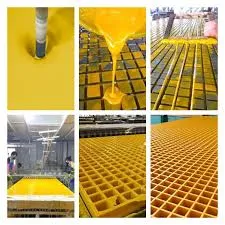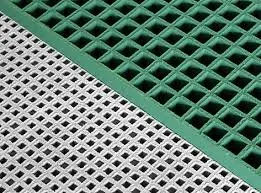
-
 Afrikaans
Afrikaans -
 Albanian
Albanian -
 Amharic
Amharic -
 Arabic
Arabic -
 Armenian
Armenian -
 Azerbaijani
Azerbaijani -
 Basque
Basque -
 Belarusian
Belarusian -
 Bengali
Bengali -
 Bosnian
Bosnian -
 Bulgarian
Bulgarian -
 Catalan
Catalan -
 Cebuano
Cebuano -
 China
China -
 China (Taiwan)
China (Taiwan) -
 Corsican
Corsican -
 Croatian
Croatian -
 Czech
Czech -
 Danish
Danish -
 Dutch
Dutch -
 English
English -
 Esperanto
Esperanto -
 Estonian
Estonian -
 Finnish
Finnish -
 French
French -
 Frisian
Frisian -
 Galician
Galician -
 Georgian
Georgian -
 German
German -
 Greek
Greek -
 Gujarati
Gujarati -
 Haitian Creole
Haitian Creole -
 hausa
hausa -
 hawaiian
hawaiian -
 Hebrew
Hebrew -
 Hindi
Hindi -
 Miao
Miao -
 Hungarian
Hungarian -
 Icelandic
Icelandic -
 igbo
igbo -
 Indonesian
Indonesian -
 irish
irish -
 Italian
Italian -
 Japanese
Japanese -
 Javanese
Javanese -
 Kannada
Kannada -
 kazakh
kazakh -
 Khmer
Khmer -
 Rwandese
Rwandese -
 Korean
Korean -
 Kurdish
Kurdish -
 Kyrgyz
Kyrgyz -
 Lao
Lao -
 Latin
Latin -
 Latvian
Latvian -
 Lithuanian
Lithuanian -
 Luxembourgish
Luxembourgish -
 Macedonian
Macedonian -
 Malgashi
Malgashi -
 Malay
Malay -
 Malayalam
Malayalam -
 Maltese
Maltese -
 Maori
Maori -
 Marathi
Marathi -
 Mongolian
Mongolian -
 Myanmar
Myanmar -
 Nepali
Nepali -
 Norwegian
Norwegian -
 Norwegian
Norwegian -
 Occitan
Occitan -
 Pashto
Pashto -
 Persian
Persian -
 Polish
Polish -
 Portuguese
Portuguese -
 Punjabi
Punjabi -
 Romanian
Romanian -
 Russian
Russian -
 Samoan
Samoan -
 Scottish Gaelic
Scottish Gaelic -
 Serbian
Serbian -
 Sesotho
Sesotho -
 Shona
Shona -
 Sindhi
Sindhi -
 Sinhala
Sinhala -
 Slovak
Slovak -
 Slovenian
Slovenian -
 Somali
Somali -
 Spanish
Spanish -
 Sundanese
Sundanese -
 Swahili
Swahili -
 Swedish
Swedish -
 Tagalog
Tagalog -
 Tajik
Tajik -
 Tamil
Tamil -
 Tatar
Tatar -
 Telugu
Telugu -
 Thai
Thai -
 Turkish
Turkish -
 Turkmen
Turkmen -
 Ukrainian
Ukrainian -
 Urdu
Urdu -
 Uighur
Uighur -
 Uzbek
Uzbek -
 Vietnamese
Vietnamese -
 Welsh
Welsh -
 Bantu
Bantu -
 Yiddish
Yiddish -
 Yoruba
Yoruba -
 Zulu
Zulu
Jan . 23, 2025 04:26
Back to list
Oblate Tanks
Fiber Reinforced Polymer (FRP) materials have increasingly become a cornerstone in the innovative world of heat and nuclear power applications. Their unique properties, blending strength with light weight and resistance, create solutions previously unattainable with traditional materials. In the realm of these high-stakes industries, FRPs offer unparalleled advantages that not only propel efficiencies but also advance sustainability and safety standards.
The integration of FRP materials into heat and nuclear power applications is supported by a robust portfolio of successful projects and studies. For example, in the refurbishment of heat exchangers, FRP components have demonstrated superior performance over traditional alloys, offering increased thermal conductivity and durability. Furthermore, the versatility of FRP is evidenced in its application for constructing storage tanks and pressure vessels, where its chemical resistance and strength-to-weight ratio outperform traditional options. Despite the remarkable advantages of FRP materials, expertise in their application is essential to maximize their benefits. Engineering teams intending to incorporate FRPs must possess a thorough understanding of composite science, including the interplay of fiber type, matrix properties, and environmental factors affecting performance. Collaborations with certified professionals in composite technology ensure that solutions are not only effective but also comply with industry standards and regulations. The credibility of FRP materials in these high-risk industries is underscored by endorsements from authoritative bodies and ongoing research initiatives aimed at further optimizing their properties. Trust in these materials is built upon a foundation of rigorous testing and continuous innovation, ensuring that the newest FRP composites meet the evolving needs of heat and nuclear power challenges. In conclusion, the application of FRP materials in heat and nuclear power industries marks a transformational shift towards safer, more sustainable, and cost-effective operations. By leveraging their unique properties, these composites address long-standing challenges while paving the way for future advancements. As the industry continues to innovate, FRP materials stand poised to play a pivotal role in shaping a resilient and efficient energy landscape.


The integration of FRP materials into heat and nuclear power applications is supported by a robust portfolio of successful projects and studies. For example, in the refurbishment of heat exchangers, FRP components have demonstrated superior performance over traditional alloys, offering increased thermal conductivity and durability. Furthermore, the versatility of FRP is evidenced in its application for constructing storage tanks and pressure vessels, where its chemical resistance and strength-to-weight ratio outperform traditional options. Despite the remarkable advantages of FRP materials, expertise in their application is essential to maximize their benefits. Engineering teams intending to incorporate FRPs must possess a thorough understanding of composite science, including the interplay of fiber type, matrix properties, and environmental factors affecting performance. Collaborations with certified professionals in composite technology ensure that solutions are not only effective but also comply with industry standards and regulations. The credibility of FRP materials in these high-risk industries is underscored by endorsements from authoritative bodies and ongoing research initiatives aimed at further optimizing their properties. Trust in these materials is built upon a foundation of rigorous testing and continuous innovation, ensuring that the newest FRP composites meet the evolving needs of heat and nuclear power challenges. In conclusion, the application of FRP materials in heat and nuclear power industries marks a transformational shift towards safer, more sustainable, and cost-effective operations. By leveraging their unique properties, these composites address long-standing challenges while paving the way for future advancements. As the industry continues to innovate, FRP materials stand poised to play a pivotal role in shaping a resilient and efficient energy landscape.
Next:
Related Products
Latest news
-
Exploring the Benefits of Top Hammer Drifter Rods for Enhanced Drilling PerformanceNewsJun.10,2025
-
High-Precision Fiberglass Winding Machine for GRP/FRP Pipe Production – Reliable & Efficient SolutionsNewsJun.10,2025
-
FRP Pipes & Fittings for Shipbuilding - Corrosion-Resistant & LightweightNewsJun.09,2025
-
Premium FRP Flooring Solutions Durable & Slip-ResistantNewsJun.09,2025
-
Premium Fiberglass Rectangular Tanks Durable & Lightweight SolutionNewsJun.09,2025
-
Tapered Drill String Design Guide Durable Performance & UsesNewsJun.09,2025









